Researching Artists working within the Land Art Movement.
While looking into land art I came across a couple of artists including: Michael Heizer, Andy Goldsworthy and Patrick Dougherty. This research gave my insight into the land art movement and the different ways artists used the land or environment to create art outside the museum. I wanted to look more into the land art movement as within my own work I was focusing more and more on mimicking nature with the use of other found materials mainly stuff from recycling bins.
Michael Heizer
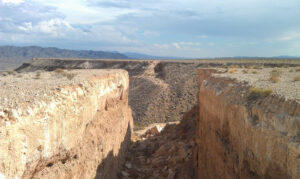
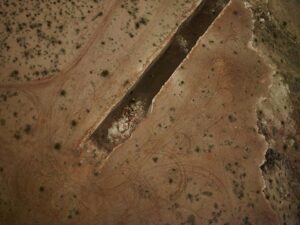
I came across the artist Michael Heizer and his work “Double Negative”. The big scale piece focuses on the beauty of what’s not there allowing the negative space to make up work. The lack of space takes you into the solid rock creating an overpowering feeling in relation to the huge landscape. I think the public nature of this piece can be enjoyed over the time by many different visitors. The lasting effect of the work on the landscape will be seen changing and deteriorating over time, hopefully years to come. I enjoyed this work because the artist replicated a natural occurrence of a valley by making a man-made one. This created sharper edges, a deeper valley and overall more crisp finish playing on the eye of the audience. I really enjoyed that the artist used the opposite of building, taking away from what he saw. I though this was influential in my own work as I started looking at the native space as well as adding to the landscape with my work.
Andy Goldsworthy
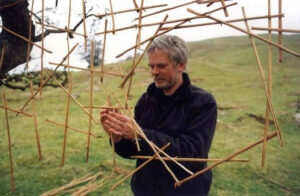
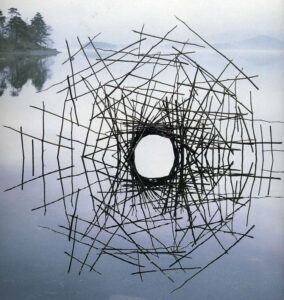
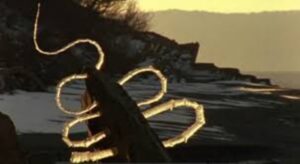
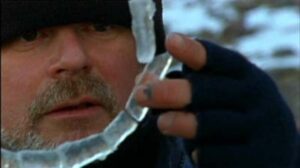
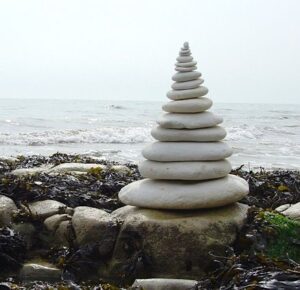
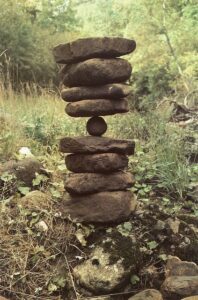
Next I was looking at the work of Andy Goldsworthy and his exploration of rocks, leaves, sticks and even ice in his surroundings environment. He pushed forward a new idea within the land movement to make make smaller sculptures. He wanted to connect to nature as directly as possible hence his focus on something that is in abundance in the environment to create interventions of pattern and shape. The artist is known for balancing natural materials on each other and against the landscape where people can find these works when on the walking a path in the wild. The aim of these smaller works was to not be permanent in any way, turning back into nature when the wind, growth of the surrounding nature or even letting heat and cold destroy the art transforming it back to what it was to begin with. I liked that the small scale added a fragility to the works and allowed them to exist in this transitory state. This is something I wanted to explore myself in my own work so I worked with ice and other materials to see how their natural functions play a part with my sculpture. The idea that nothing should last forever even within sculpture is something that stood out for me, when developing my work with the plastic as it’s a commentary on the material and it’s long shelf life that shouldn’t be as used as much to my work with soil, water and ice that don’t have a permanent state. This inspired me further to look closer at nature and it’s impermanence.The work of this artist influence to explore with interventions that won’t last, using ice to play about with how soil can be transformed as well as plastic.
Patrick Dougherty
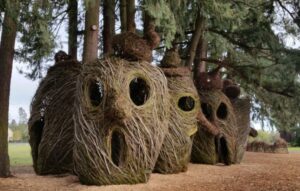
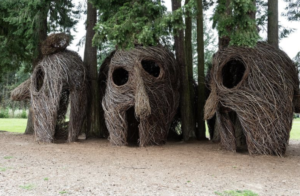
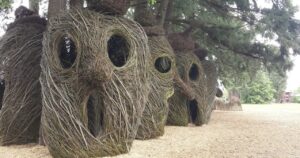
The work of Patrick Dougherty, “Heads Over Heels” 2017 was created for a nature park where it stood from 2017 to 2019. Impermanence was a theme in this artist works along side the making of work that was found or rediscovered when taken the path they might be found on. During the period that the head-shaped sculptures stood proud in this park, they deteriorated as there materials that they where made out included things like bent saplings, sticks and twigs. Some head where even removed astray started to be unstable. A bug influence in their artist work came from looking at nests and their aesthetic and the interaction that happens when they are found by the public as this was something he tried to recreate within his own works. The aim had never been to make some permeant by something with a limited lifespan due to the way they where constructed through found natural materials. Within the making of these sculptures, the public also played a big role as the people from the community volunteered as least 1,000 hours in the help to make these pieces with the artist.




Recent comments